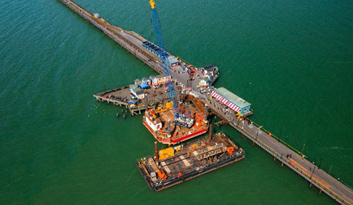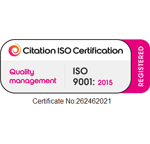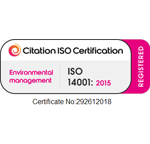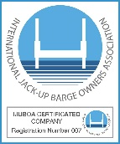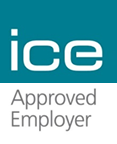Case Study Overview
Red7Marine supported the Marine and Civil Services / GPS (MACS / GPS) joint venture on work to strengthen Southend Pier ahead of construction work for a new public toilet block being built. The project is being carried out on behalf of Southend-on-Sea Borough Council and is a part of the £2.5million capital investment into Southend-on-Sea’s pier head, following engagement with residents and visitors.
At a glance
- Location: Southend-on-Sea Pier
- Plant used: Haven Seajack 2 100t jack-up barge
- What we did: Red7Marine supported the Marine and Civil Services / GPS (MACS / GPS) joint venture on work to strengthen Southend Pier ahead of construction work for a new public toilet block being built.
The Challenge
To support the project, MACS / GPS chartered Red7Marine’s 100t deck-capacity jack-up barge, the Haven Seajack 2. The barge was used as a stable platform for the installation of new support piles and steel beams, and bracing, to provide additional support for the pier structure.
This was one of the most challenging locations we have ever had to mobilise a jack-up barge due to the lack of accurate geotechnical and environmental data available. Whilst completing a Site-Specific Assessment for the project, our team found some data which suggested reasonably firm clay at the surface, whilst others stated a rather deep layer of silty clay with limited properties in regard to its ground bearing capacity. There was also evidence of a sand layer at a depth of around 10-13m deep, followed by further clay, presenting a risk of punch-through. Risk of scour was assessed but due to the expected depth of penetration, the risk was considered as low. However, having significant penetration into clay, produced a risk during extraction of the legs.
We had initially assessed using our Haven Seaway jack-up barge due to its larger deck capacity, however after conducting a Leg Penetration Assessment (LPA), a high risk of punch-through was identified due to a layer of loose sand within the clay layer. If the legs were to penetrate through this sand layer, then there would be insufficient leg length to get the barge to a safe height. To overcome this problem, Red7Marine performed an LPA for the Haven Seajack 2, with a lighter deck load, there was less penetration. While the risk of punch-through remained on the low bound assessments, the leg length stayed above the operational limits of the barge. To best reduce risk during the event of punch-through, cyclic preloading techniques were adopted and all vibro piling operations were to be restricted if used.
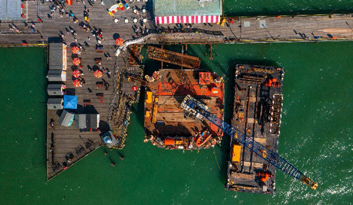
The Solution
The Haven Seajack 2 successfully completed the operations and received leg penetrations as predicted, a result of the due diligence taken by all parties throughout the planning phases of the project. The structural support work was completed ahead of the main construction programme to install new public toilets, to replace the original block which was destroyed by a fire in 2005. The new block will also include an estuary viewing platform on the floor above. The toilet block is one of several initiatives taking place to improve the pier.
Southend Pier has remained open to the general public as normal throughout the operations, with the majority of the work being carried out in the early morning to cause as little disruption and noise disturbance as possible.
